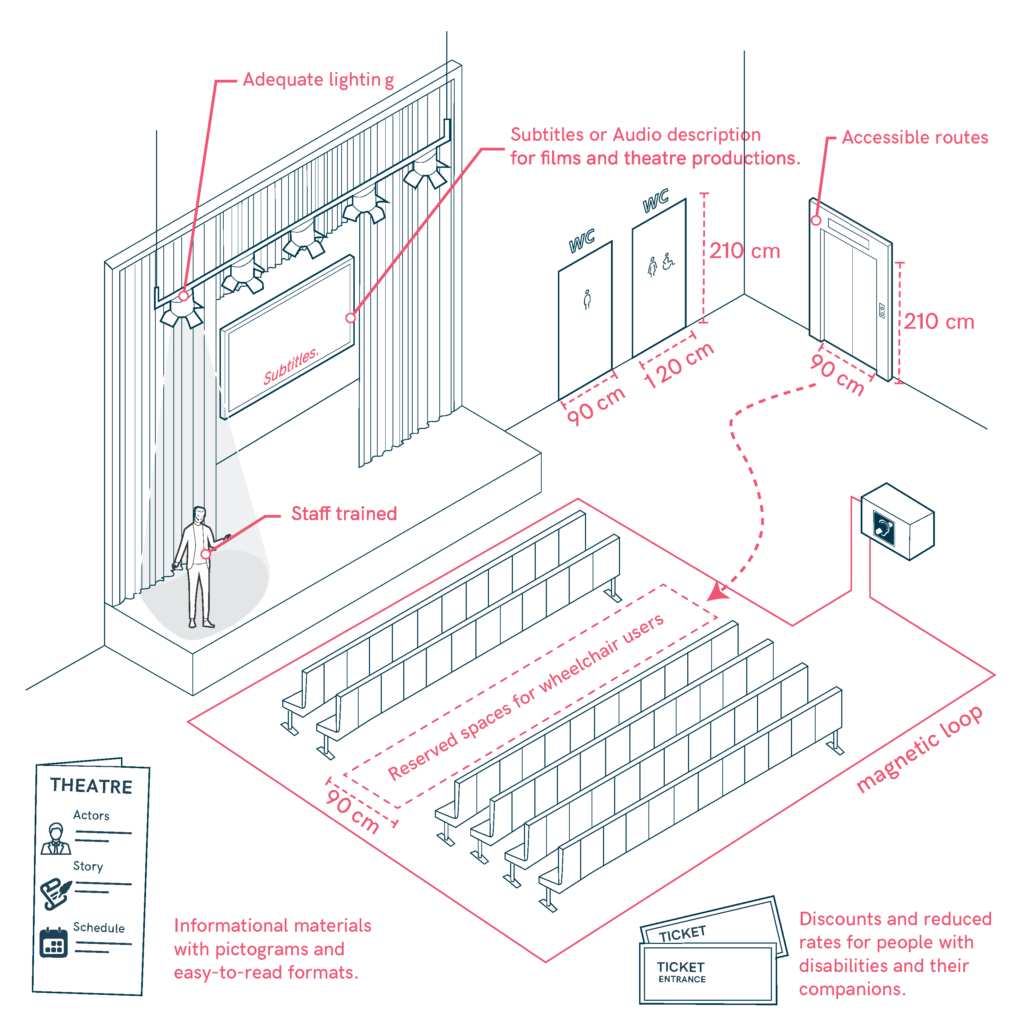Theatre and Cinema
Access to culture should be universal, meaning cinemas and theatres must provide accessible routes, designated spaces with good visibility, and sensory support options such as subtitles, audio description, and sign language interpreters. Proper lighting, the use of clear language, and staff training improve the experience for people with disabilities. Additionally, programming should be diverse and inclusive, offering adapted performances and opportunities for artists with disabilities to participate.

- Accessible routes with ramps and lifts, as well as accessible toilets.
- Reserved spaces for wheelchair users with good visibility and adapted seating for people with reduced mobility.
- On-screen subtitles or individual devices for people with hearing impairments.
- Audio description for films and theatre productions.
- Sign language interpreters for selected performances.
- Induction loop systems for people with hearing aids.
- Adequate lighting to facilitate lip-reading.
- Use of clear and simple language on signage and announcements.
- Staff trained to assist people with intellectual disabilities.
- Informational materials with pictograms and easy-to-read formats.
- Discounts and reduced rates for people with disabilities and their companions.
- Performance schedules adapted for people with sensory hypersensitivity.
- Diverse programming that represents different realities and identities.
- Opportunities for people with disabilities to participate in artistic creation.
- Dressing rooms, stages, orchestra areas, and backstage toilets must be accessible for all involved in the production (actors, directors, technicians, etc.).
Sources
- Carers
- Children
- Cognitive
- Cognitive abilities
- Decolonial perspective
- Digital
- Digital barrier
- Enviroment
- Environmental
- Gender and generations
- Gender perspective
- Hearing impairment
- Low-education
- Low-income
- Older people
- Other
- Physical abilities and features
- Sensory and Physical
- Socioeconomic
- Visual impairment